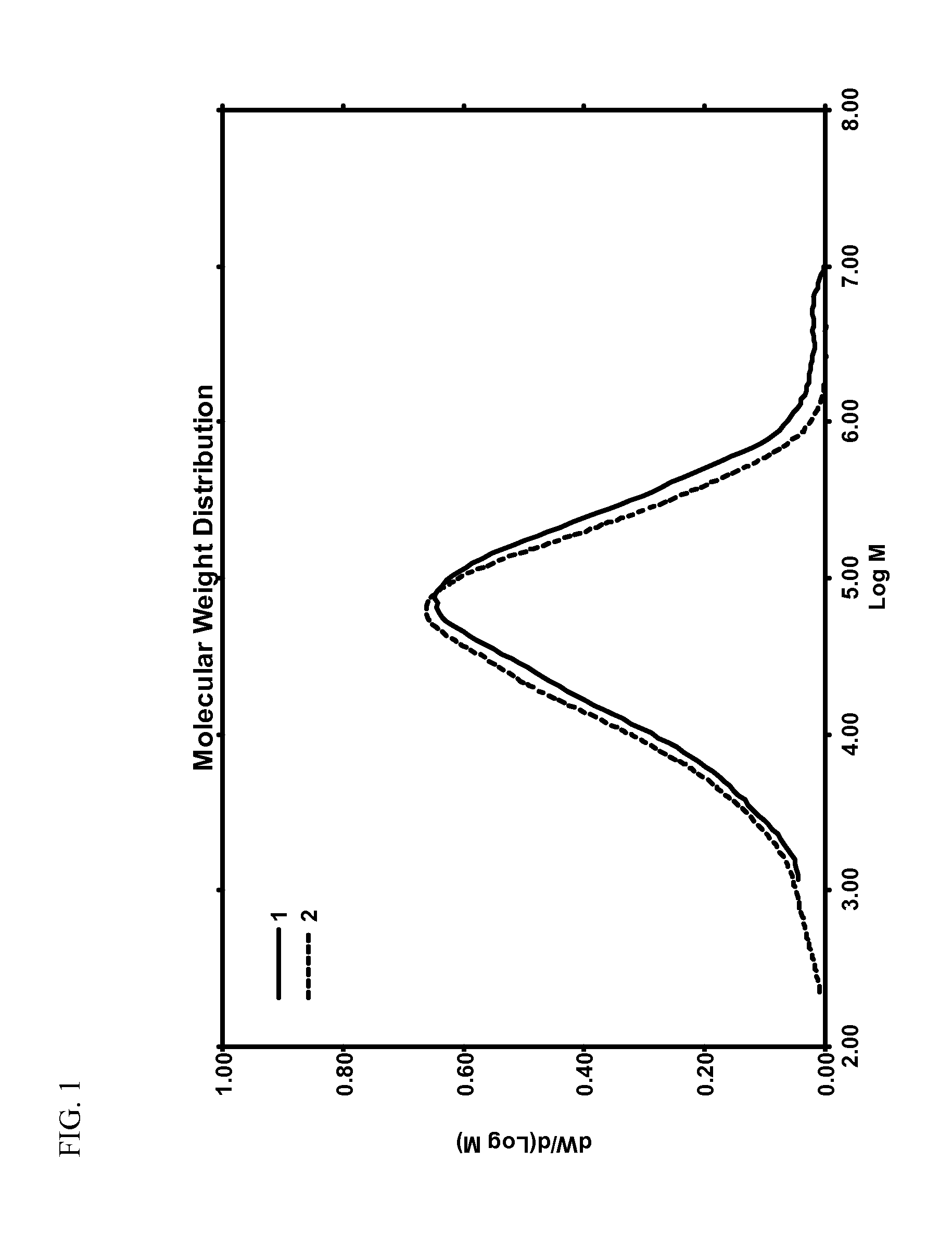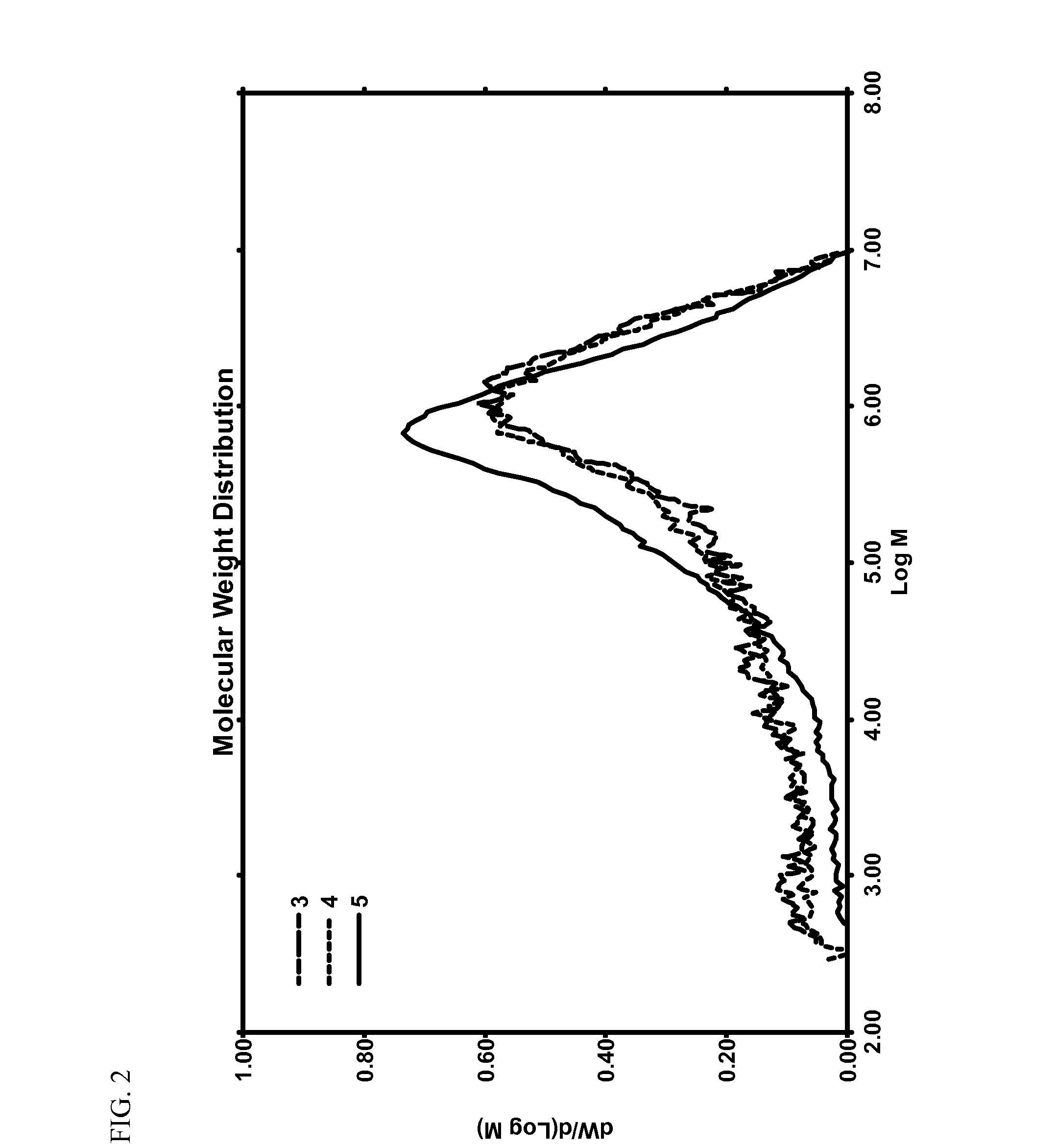Use of Hydrogen and an Organozinc Compound for Polymerization and Polymer Property Control
a technology of organozinc compound and hydrogen, which is applied in the field of polymerization and polymer property control, can solve the problems of adversely affecting the polymerization process and other polymer properties
- Summary
- Abstract
- Description
- Claims
- Application Information
AI Technical Summary
Benefits of technology
Problems solved by technology
Method used
Image
Examples
examples
[0258]The invention is further illustrated by the following examples, which are not to be construed in any way as imposing limitations to the scope of this invention. Various other aspects, embodiments, modifications, and equivalents thereof which, after reading the description herein, may suggest themselves to one of ordinary skill in the art without departing from the spirit of the present invention or the scope of the appended claims.
[0259]The sulfated alumina activator-support used in the examples was prepared as follows. Bohemite was obtained from W.R. Grace Company under the designation “Alumina A” and having a surface area of about 300 m2 / g and a pore volume of about 1.3 mL / g This material was obtained as a powder having an average particle size of about 100 microns. This material was impregnated to incipient wetness with an aqueous solution of ammonium sulfate to equal about 15% sulfate. This mixture was then placed in a flat pan and allowed to dry under vacuum at approximat...
examples 1-5
Polymerization Experiments Using Hydrogen and / or Diethylzinc (DEZ)
[0264]All polymerization experiments were conducted for either 30 min or 60 min in a one-gallon (3.8-L) stainless-steel autoclave reactor containing two liters of isobutane as diluent. Sulfated alumina was used as the activator. The metallocene compound was pentamethylcyclopentadienyl chromium dichloride, and the neutral ligand was pyridine, with zero or one coordinated with the metallocene compound. A solution of the metallocene was prepared by dissolving about 2 mg of the metallocene compound in about 2 mL of toluene.
example 1
[0265]Under isobutane purge, 0.5 mL of a TIBA solution (25% in heptanes) were charged to a cold reactor, followed by 1 mL of the metallocene solution, and 0.2 g of the sulfated alumina The reactor was sealed, 2 L of isobutane were added, and stirring was initiated at 700 rpm. As the reactor temperature approached the target run temperature of 105° C., ethylene and hydrogen (molar ratio of H2 / C2=0.1) were added to maintain a reactor pressure of 584 psi (4 MPa) throughout the run. The reactor was maintained at 105° C. for 60 min, and then the volatiles were vented from the reactor. Solid polyethylene was collected from the reactor (297 g).
PUM
| Property | Measurement | Unit |
|---|---|---|
| Fraction | aaaaa | aaaaa |
| Molar mass | aaaaa | aaaaa |
| Molar mass | aaaaa | aaaaa |
Abstract
Description
Claims
Application Information
 Login to View More
Login to View More - R&D
- Intellectual Property
- Life Sciences
- Materials
- Tech Scout
- Unparalleled Data Quality
- Higher Quality Content
- 60% Fewer Hallucinations
Browse by: Latest US Patents, China's latest patents, Technical Efficacy Thesaurus, Application Domain, Technology Topic, Popular Technical Reports.
© 2025 PatSnap. All rights reserved.Legal|Privacy policy|Modern Slavery Act Transparency Statement|Sitemap|About US| Contact US: help@patsnap.com



